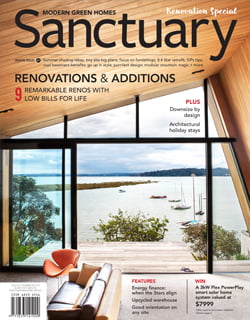Keep your cool with external shading
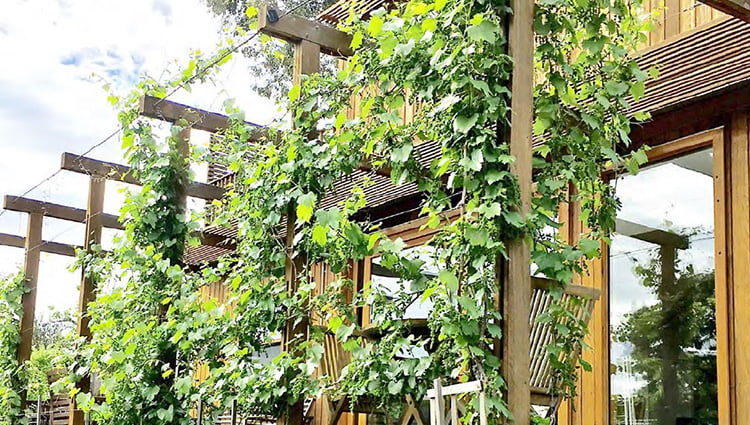
With summers getting hotter in many parts of Australia, keeping the sun off your windows and out of your home is becoming even more important. Anna Cumming looks at the options for external shading, for both new builds and retrofits.
There’s been quite a shift from pre-industrial times when glass was an artisan-crafted luxury item, and homeowners were taxed according to the number of panes they had. These days, our houses are getting bigger and so are our windows – often to the point of comprising entire walls. Windows and glazed doors frame views, admit natural light and breezes, and allow a connection with the outdoors.
However, from a thermal efficiency point of view, windows are the weak link in a home’s building envelope. Internal thermal blinds or curtains can help a lot in preventing heat loss through windows in winter (see ‘Not just window dressing’ in Sanctuary 39), but to tackle unwanted radiant heat gain in the hotter months, it’s far more effective to stop the sun hitting the glass in the first place with appropriate external shading.
Location and orientation
There is a huge variety of options for keeping the sun at bay, from carefully chosen deciduous plantings and simple solutions like a piece of shadecloth on a frame, to awnings, shutters, blinds, and even pergolas with sensor-operated louvre roofs. To choose the best solution, firstly it’s important to consider your location and the orientation of your windows. In most of Australia, shading is needed on windows on the north, and also the east (to prevent summer sun heating the house from early in the morning) and west (to block hot late afternoon sun). North of the Tropic of Capricorn, thought should also be given to shading windows on the south side of your house, as the sun’s steeply angled path in summer means these windows will also receive direct sun.
Because of the angle of the sun through the day, one size does not fit all when it comes to shading for all of the windows in your house. For windows within about 25° east and west of solar north, it’s easy to exclude summer and admit winter sun using simple horizontal devices, including eaves and awnings. This also applies to south-facing windows in the tropics. It’s reasonably straightforward to calculate the optimal width and height of eave that will stop the higher-angle summer sun from hitting the window and yet allow welcome lower-angle winter sun to penetrate deeply inside the room; Your Home provides a rule of thumb (see www.yourhome.gov.au/passive-design/shading).
For east and west windows, however, a different approach is needed as the low-angle morning and afternoon summer sun is more difficult to block. Angled or vertical shading is most effective here, and often an adjustable solution is best so it can be deployed only when needed.
Shading options
External shading products and structures fall into two broad categories: fixed and adjustable. Fixed solutions have the advantage of simplicity, and with no moving parts, are usually easier to maintain and last longer. However, they need to be carefully designed to avoid compromising solar access in winter.
Adjustable shading allows the occupants much more control over how much direct sun to admit. Such systems can be manually operated or motorised; fitted with sensors to allow them to respond automatically to sun, rain and wind conditions; and even integrated with comprehensive smart home automation systems.
An energy rating scheme for window coverings, WincovER, has recently been developed by the Blind Manufacturers Association of Australia (BMAA) – see box at the end of this article for more information.

Fixed shading
Eaves and overhangs: Don’t miss the opportunity to think about fixed shading at the design stage of your home or extension if you can. Perth-based architect Sid Thoo points out that including appropriately sized eaves or overhangs is a very straightforward, cost-effective solution. “External shading can also form part of the design aesthetic,” he says.
Fixed awnings: Another option for shading north windows (and south windows in the tropics) is a fixed horizontal or angled awning. These can be made from a wide variety of materials including steel, timber, corrugated sheet metal, cement sheet and rigid polycarbonate sheet. They should extend past the sides of the window to keep the sun off the glass for longer.
Fixed louvres/blades on windows: Usually made from metal or timber, louvres or blades are fixed in a frame against the window and can be placed running horizontally or vertically. They are particularly useful where privacy is needed or to comply with overlooking regulations.
Pergolas: Pergolas are an enduringly popular feature in Australian gardens, but striking the balance between having a great shady outdoor living space when it’s hot, and still letting sunlight and warmth into your house when it’s not, can be tricky. Roofing your pergola with fixed blades set at an angle designed to optimise winter sun access is one option; others include translucent but thermally effective polycarbonate sheet roofing, and simply growing a deciduous vine over it.
Shade sails and umbrellas: Made from knitted polyethylene fabric that’s available in a range of different light blockout levels, shade sails can be bought off the shelf or custom designed for specific spaces – or even made at home. If some rain protection is required, sails and umbrellas also come in waterproof coated fabric.
Adjustable shading
Retractable awnings and blinds: Pivot arm, folding arm, horizontal awnings on wires, roller, vertical drop – retractable awnings and blinds come in many styles. They can be closed up when not needed, allowing full winter sun access. With no support poles or attachments when extended, folding arm awnings in particular are quite susceptible to wind damage, but they can be fitted with sensors that close them automatically when bad weather hits.
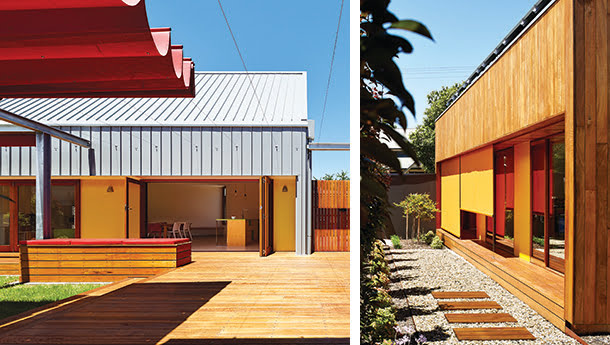
Adjustable louvres/blades on windows: They are a pricier option, but metal louvres reflect more heat than fabric shading options, and adjustable versions offer scope for fine-tuning light levels inside the room. This style of shading is also good for privacy without sacrificing too much daylight.
Pergola/solar roof with adjustable blades: Another big ticket item, pergolas with adjustable blade roofs such as those offered by Vergola can be completely rainproof when closed, turning your outdoor living area into an all-weather space.
Shutters and screens: External shutters and screens – hinged, bifold, sliding or roller – are usually made from Thermalite (a high density plastic foam), timber or aluminium, and sometimes steel (although note that metal may heat up and radiate heat inwards, which could be a problem depending on the design). As they are fitted very close to the window, “they stand up to all sorts of weather,” says Joe Turner, president of the BMAA. Depending on the material and style chosen, they can also perform insect screening, security and bushfire ember protection functions.
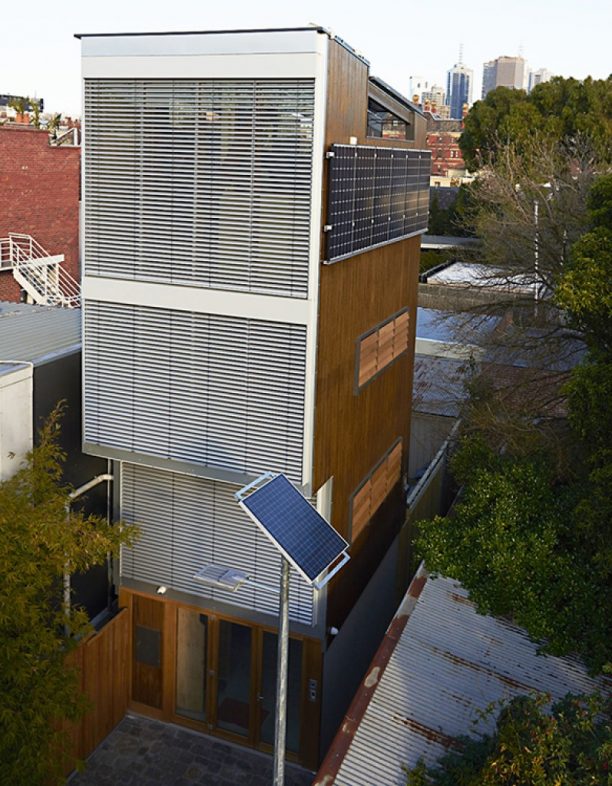
Deciduous plants
Don’t overlook the option of using deciduous plants to provide shade to your house. This could be a vine growing on a freestanding frame or pergola, or a tree planted to block western summer sun. Be careful to match plant characteristics (such as foliage density, canopy height and spread) to your shading requirements, and choose local native species with low water requirements where possible. Plants can also be used to shade your walls: see ‘Green facades’ in Sanctuary 37 for more.
Materials
Many different materials can be pressed into service as external shading, depending on the application and desired characteristics. Rigid materials include timber, aluminium, steel, polycarbonate sheet, and even concrete (for formed window surrounds).
For flexible shading, traditional canvas is still available but it’s been joined by more high-tech PVC, polyester and even fibreglass fabrics. “I’d rate these newer sun screen fabrics very highly,” says Joe Turner. “They incorporate small holes that let light in and views, they breathe, and they have a better shading effect than canvas.”
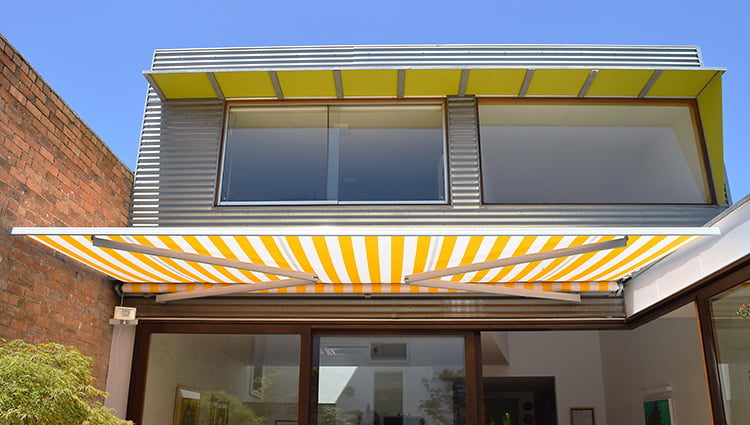
As always, making an environmentally responsible choice is a matter of considering many factors including renewability of raw materials, the manufacturing process, recyclability, durability and expected lifespan, maintenance requirements and end-of-life disposal. Shaila Divakarla, architect and Standards & Technical Manager at Good Environmental Choice Australia (GECA), sums it up: “Every material has some advantages and disadvantages, so requires careful consideration of your particular needs and location. Think of the life cycle – where is the material coming from? Does it have any toxic components? How much energy does it take to make it? What happens at the end of its life?”
As external shading products are exposed to harsh environmental conditions, natural materials are often not suitable or would have a greatly reduced lifespan. Sid Thoo explains his approach: “Durability can be an issue – I try to avoid things with moving parts or that will require sealing or repainting over time. They might look great when first installed, but if they are then hard to access or maintain, this can become an issue over the life of the building.”
Unfortunately, GECA does not yet have a standard or certification process for shading products, but Shaila says it’s on their wishlist.
Other considerations
Space: The optimal shading solution for a given window just might not fit in the space available, especially if the window is built very close to a boundary. Perhaps consider a combination of a different external shade and an internal (possibly reflective) blind instead.
Visibility and permeability: Older-style canvas blinds and awnings are effective shading, but they also cut off views to the outside, block breezes and dramatically reduce daylight. Louvres, perforated screens and shutters, and blinds and awnings made from more modern high-tech mesh fabrics, allow airflow and diffuse daylight through but still block a significant proportion of direct solar heat gain.
Ease of operation: Consider how your windows open: will your external shading get in the way? Install vertically hung or angled shading far enough away from casement windows to allow them to open. Can manually operated shading be reached easily from inside by opening the window, or will it require a trip outside? If your shading is tricky to operate, it’s likely it won’t be used optimally to regulate solar access, reducing its energy efficiency contribution.
Mechanisation: For shading on hard-to-access windows, particularly those above the ground floor, mechanisation using a switch or remote control – or even, these days, a smartphone app – can make a lot of sense. It does add complexity and cost though, so it’s worth weighing up against the expected energy efficiency gains of better-performing shading.
Double duty: Think about whether your shading solution could fulfil another function at the same time – perhaps wind protection, privacy screening, insect screening or protection from ember attack during a bushfire.
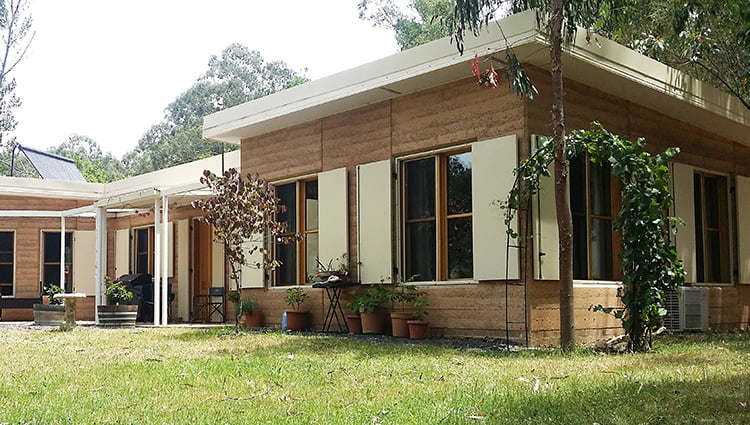
Colour: Your Home notes that lighter coloured shading devices reflect more heat, and those with light coloured undersides make better use of daylight than those with dark coloured undersides. If you’re looking to retain some of your view through your shading, “fabric colour makes a difference,” says Joe Turner. “The darker the colour, the more heat gets in, but the better the view through the blinds; the lighter colours reflect heat better but don’t give quite as clear a view.”
DIY suitability, and ease of removal: If being able to install your shading yourself is important, check that it’s possible for your chosen product. For example, folding arm awnings consist of two tensioned arms that are attached to the wall with very strong fixings to enable them to extend up to four metres from the wall with no support poles; they definitely need to be installed by professionals. Other products like roller blinds are easier to DIY. You might also like to opt for shading that is easy to remove and take with you to your next house, especially if you are a renter. Shadecloth on a freestanding frame or small shade sails are good options here.
At the end of the day
As the climate warms and as cooling becomes a bigger proportion of many home energy loads, the importance of well-chosen external shading to keep the heat out before it hits the glass (or walls or roof) is only going to increase. Shaila Divakarla offers this advice for the most sustainable approach to choosing: “Spend time planning before making the choice; give it some thought with respect to your own particular situation. Don’t be swayed by fashion or what your neighbours are doing. Don’t just go for what’s cheapest or looks nice – think about the long-term cost.”
WincovER energy rating scheme
The Blind Manufacturers Association of Australia has been working on a rating scheme for window coverings and sun control systems. The new WincovER scheme will provide a simple star rating for many different types of internal and external shading products, with each product being rated separately for both heating and cooling performance.
Rated products will be listed in a publicly accessible database so that homeowners can compare products. At present, there are many different types of internal blind types that can be rated, while exterior products are limited to those that sit parallel to the window. It is expected the range will be broadened in the future as simulation technology allows.
Note that the WincovER rating is independent from the WERS (Window Energy Rating Scheme, www.wers.net) rating, which rates the energy impact of the selected window system on the whole house. However, ultimately a WincovER module will be added to WERS which will allow calculation of the effect of adding a shading layer to a window, quantifying the composite performance, whether the shading system is external, internal, or even between two panes of glass.
WincovER is set to be launched by the end of 2017. For updates, keep an eye on the BMAA website.
Recommended for you
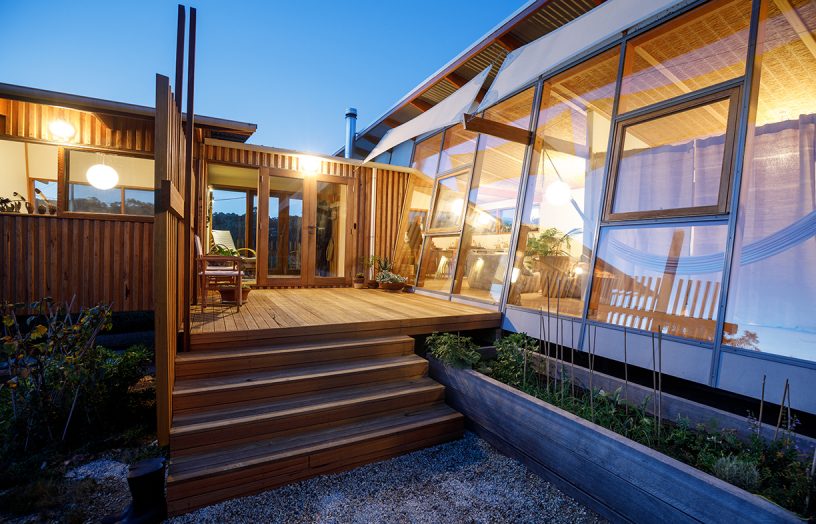 Sustainable Design
Sustainable Design
Windows: In the frame
Lance Turner and Dick Clarke introduce you to the delicate art of window selection, and explain the key terms and concepts to get you started.
Read more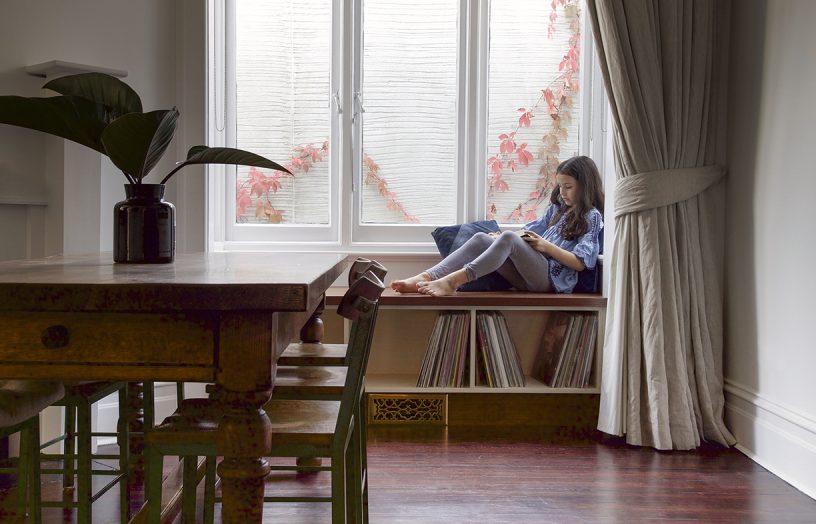 Sustainable Design
Sustainable Design
Not just window dressing: High-performance curtains, blinds and shutters
Internal window coverings can protect privacy and dramatically improve the thermal function of a house, and if you choose with care, they can help keep you comfortable for years.
Read more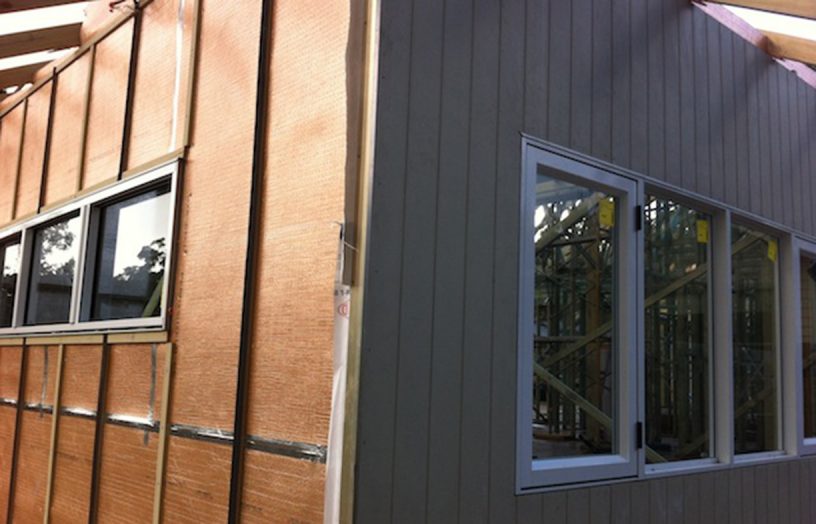 Ideas & Advice
Ideas & Advice
Window ratio to floor area advice
Is there an optimum window-to-floor ratio for different locations?
Read more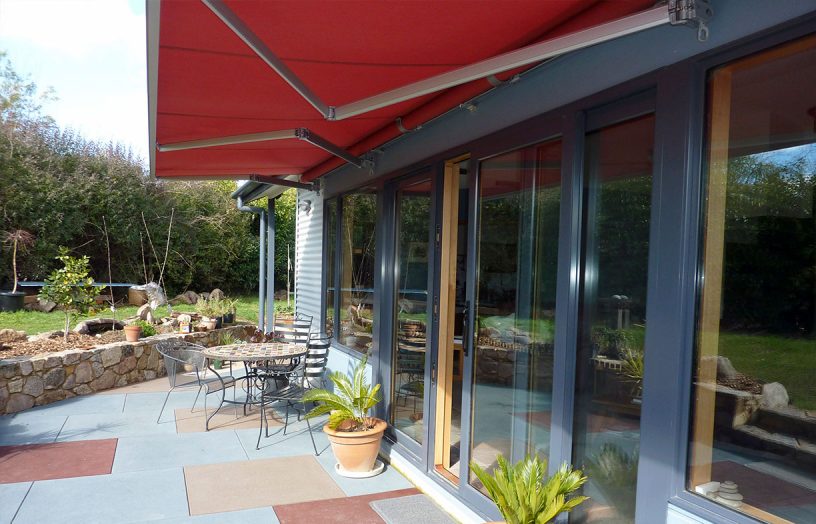 Buyers guides
Buyers guides
Keep your cool: External shading buyers guide
With summers getting hotter in many parts of Australia, keeping the sun off your windows and out of your home is becoming even more important. Anna Cumming looks at the options for external shading, for both new builds and retrofits.
Read more

